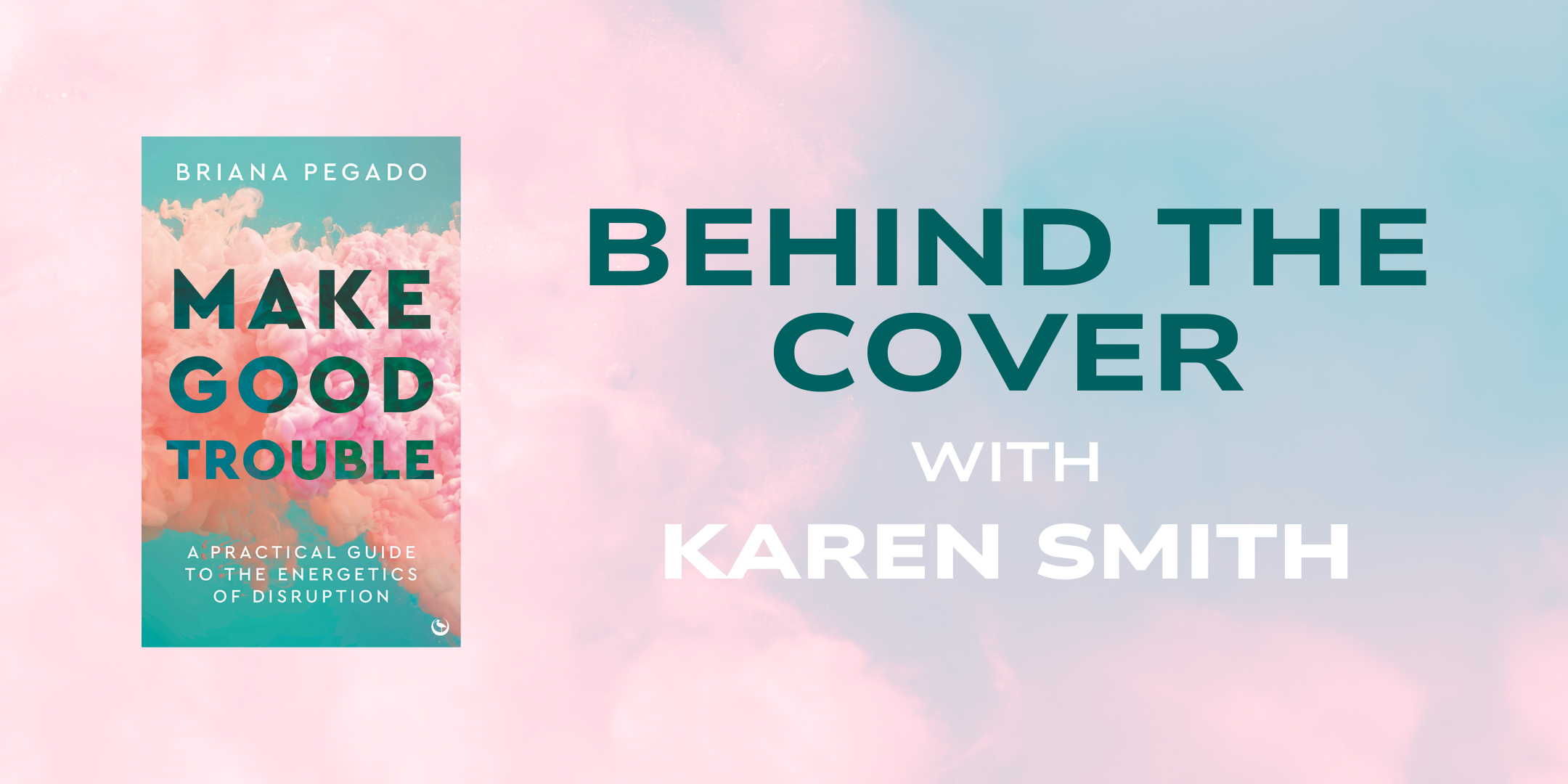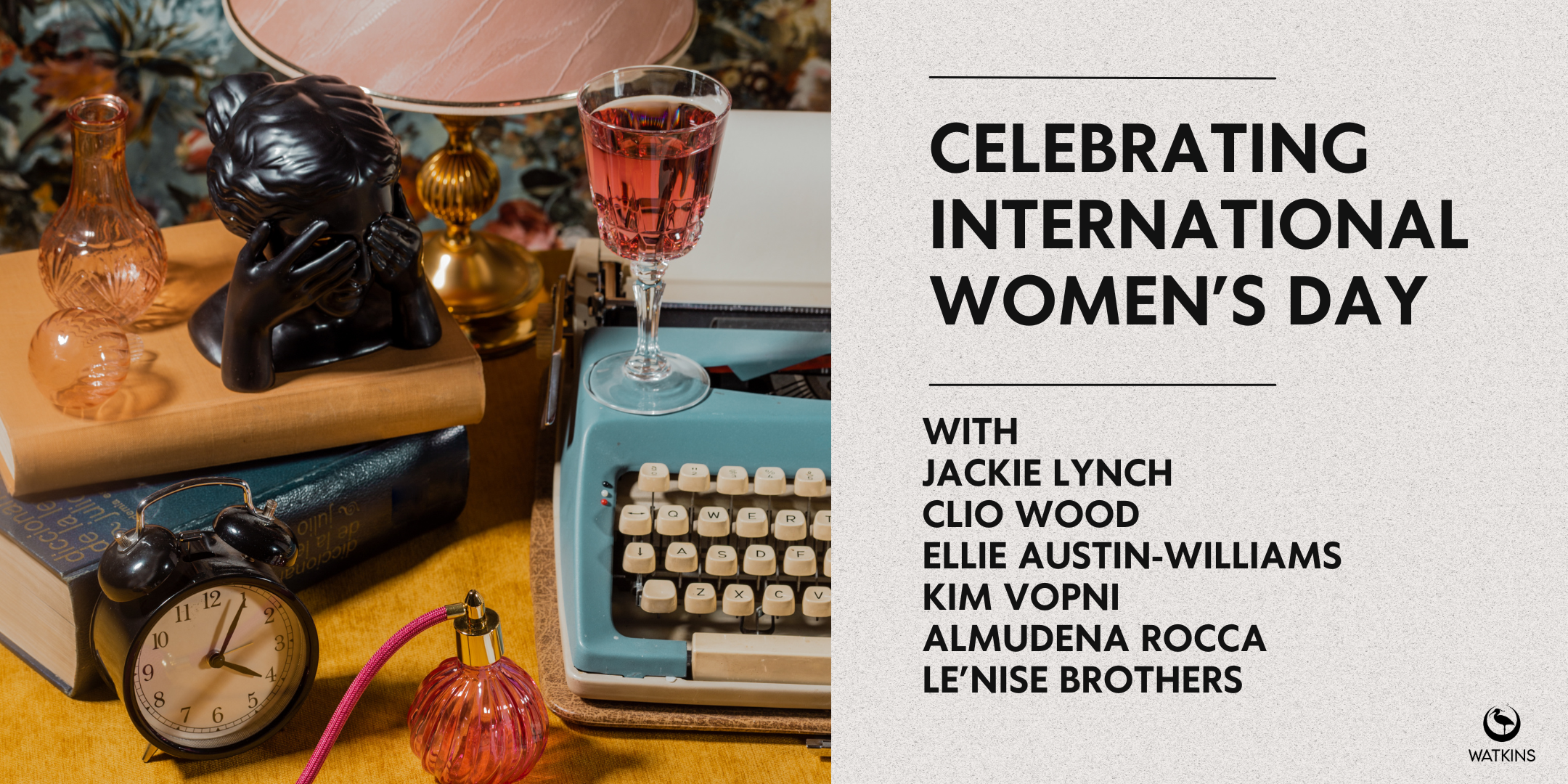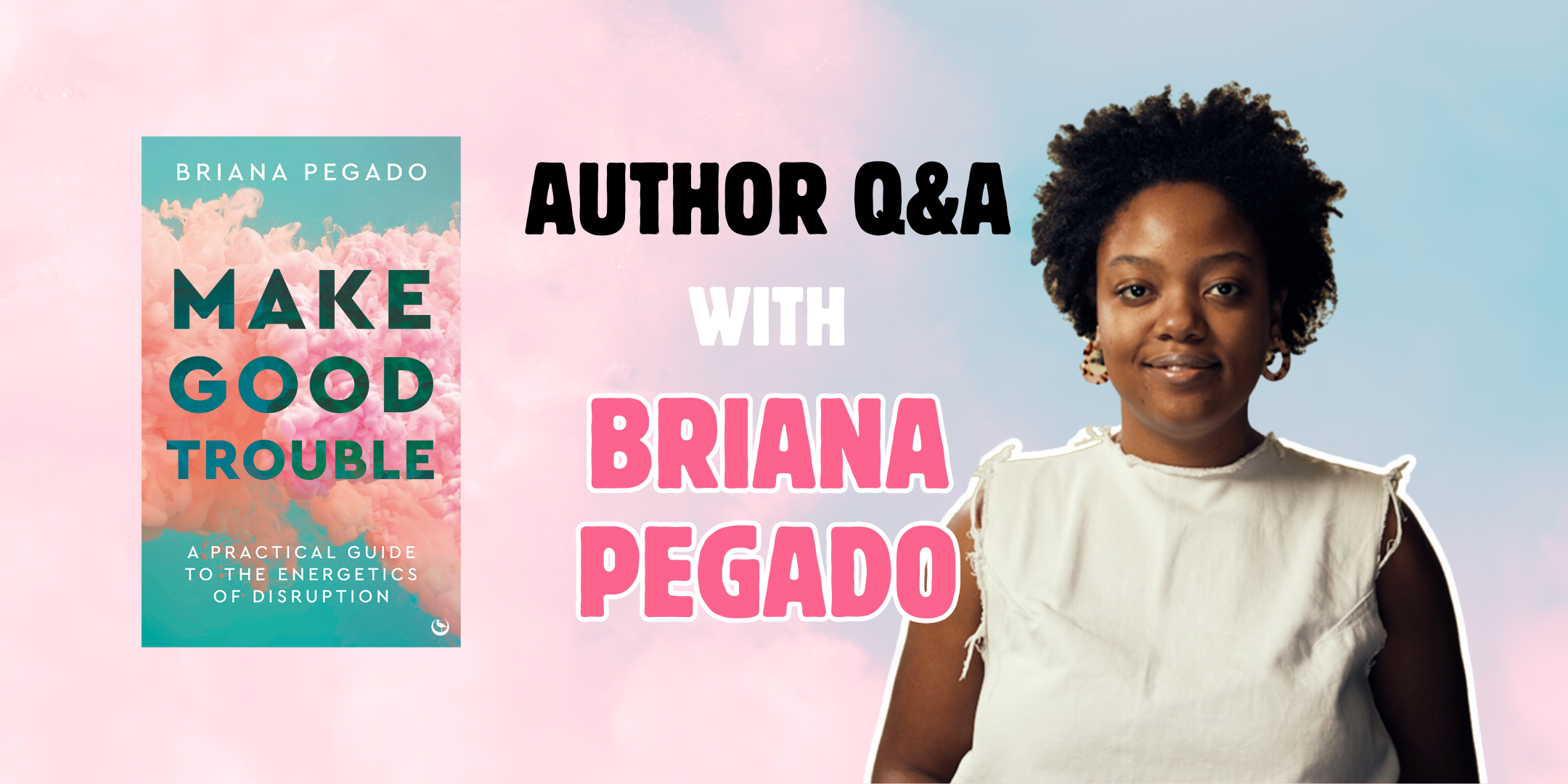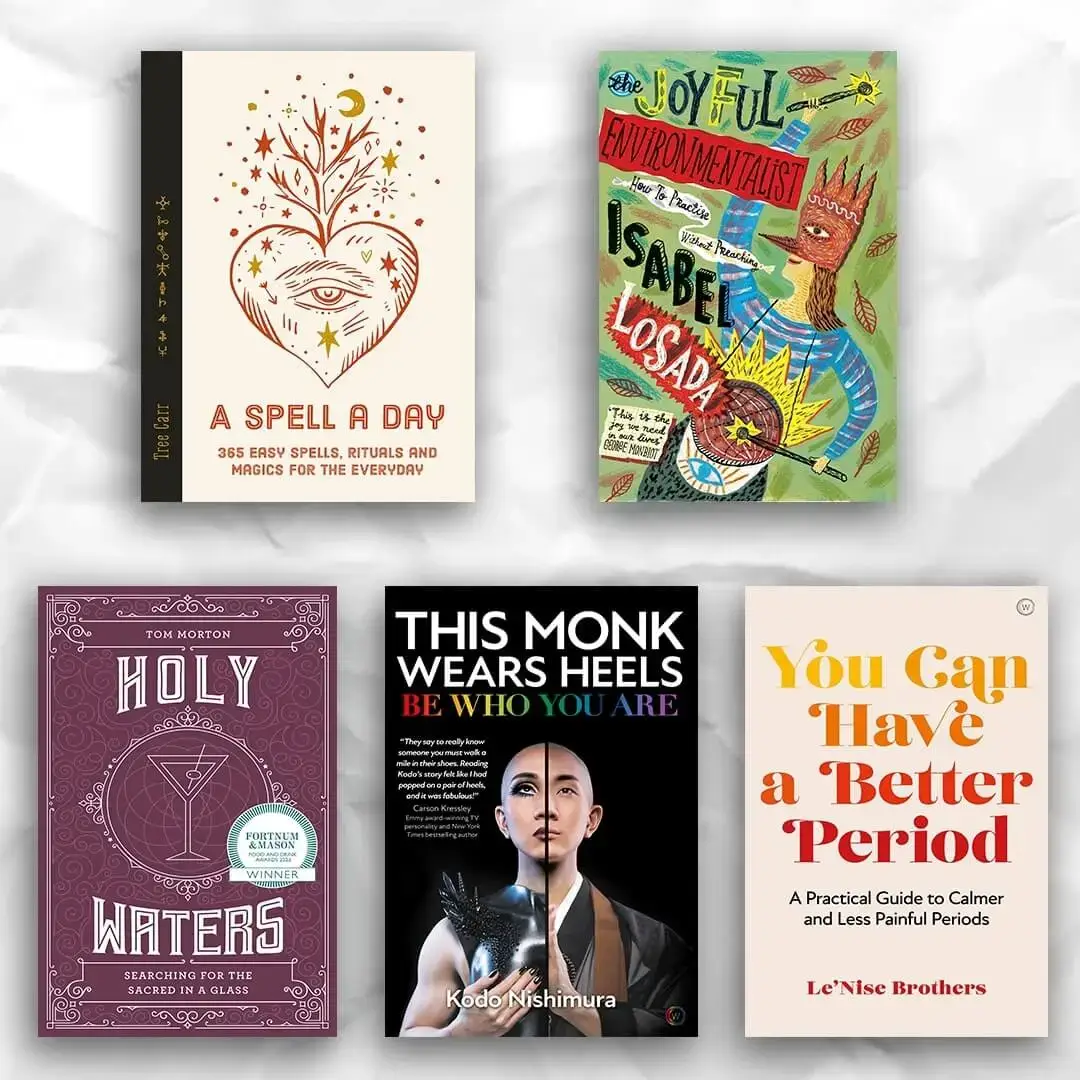Behind The Cover – Make Good Trouble with Karen Smith

Last night (March 7th) was the The Academy of British Cover Design awards where Repeater designer Hollie Smith was nominated for the non-fiction category for the cover of Collapse Feminism. In honour of the awards, I spoke to Karen Smith, Head of Book Design at Watkins Media about the decisions behind the cover of Make Good Trouble, written by Briana Pegado.
The process of designing a book cover has several stages. First, the editorial team put together a brief for the designers so they have a better understanding of how they want the book to come across. The design team are also shown examples of competitor titles so they can visualise how the book might look on the shelf of a bookshop next to titles in the same genre.
Make Good Trouble had a somewhat challenging brief.
It was the desire of the team that the cover of Make Good Trouble ought to encapsulate that energy of disruption written about in the book. It had to be dynamic, energetic and have a sense of movement to it. Make Good Trouble was not a book written to be pretty but to be powerful. This was taken into consideration.
The theme of ‘good trouble’ can be conceptualised in many ways. For example, through the imagery of disturbances like cracks, broken screens, mirrors, rubble and fire. These speak to one half of the brief – trouble – but finding imagery to encapsulate positive disruption fit more closely to the contents of the book. Briana was presented with various designs at each stage of the process and talked through their merits with editor Ella Chappell. I asked Briana to speak to her experience of the process, as she was highly involved throughout:
“The creation of a cover design is a process of exploration, tweaking and prototyping. I love collaborating with a designer to help them bring a vision to life. With the cover for MGT, my editor Ella Chappell initially sent me a few options for the cover. We discussed the merits of each of those options. The designer had clearly done a brilliant job of interpreting the idea of disruption in a visual way, from glitches and smoke emerging across the page, to fissures and cracks running through the typography. We discussed the merits of having a darker background versus a lighter one to allow the design effects to pop. Ultimately, I asked Ella what she thought the book’s target audience might respond to. She explained to me that the cover also goes through a development process internally, taking into consideration the feedback from sales, marketing, publicity and rights departments, who are able to share their expertise on the book’s target audience. In the end, the cover that was both mine and Ella’s favourite was also the favourite among the in-house team. We landed on the image of smoke gathering behind the title of the book. The colours are evocative, but soft, mirroring the message of the book – making good trouble.”
After much brainstorming, Karen and the team agreed upon the image of the conflicting clouds of smoke which you see on the cover today. This final version was presented to Briana and Ella for consideration and received author approval. It has movement, energy and a feeling of change – a sense of pushing against the grain without being aggressive or violent. These colourful puffs overwhelm the page without hanging heavy. They imply an immersion into Briana’s world of taking charge and changing for the better. The design is an appeal to action in a transgressive, non-violent yet urgent manner.
The colour scheme was intentionally chosen to reflect a sense of femininity, inspired by Briana’s writing on Goddess Energies. Many books about rebellion and trouble-making have a dark and heavy colour scheme that demands attention from the viewer. However, Briana Pegado’s message is not one of aggression but one of peaceful action and positive change. She connects to her readers on a deeply personal level, appealing to their sense of purpose, values and community.
There was an alternative colour option considered for what would become the final cover, consisting of teal and yellow. The final cover incorporates the Pantone Colour of the Year: Peach Fuzz. The muted pink, peach and blue tones allude to a gentle, uplifting tone whilst still conveying the contrast between pink and blue, representing the activist and the change.
Karen chose a strong, clear, bold typeface for the title MAKE GOOD TROUBLE. It is a darker tone of the pastel green background with transparency allowing the texture of the clouds behind to come through. It is a visual manifestation of how we can view the same world through a different lens, apply new thought to the same problems and create change without destruction. Black is nowhere to be seen on the cover of this inspiring book. There is only optimism and positivity exuding from the cover of Make Good Trouble.
Karen Smith and her designers have done a remarkable job of encapsulating the feeling of Briana Pegado’s text: embracing the energies of disruption in order to make good trouble.
The book Make Good Trouble by Briana Pegado is available to pre-order now. It publishes April 9th 2024.




